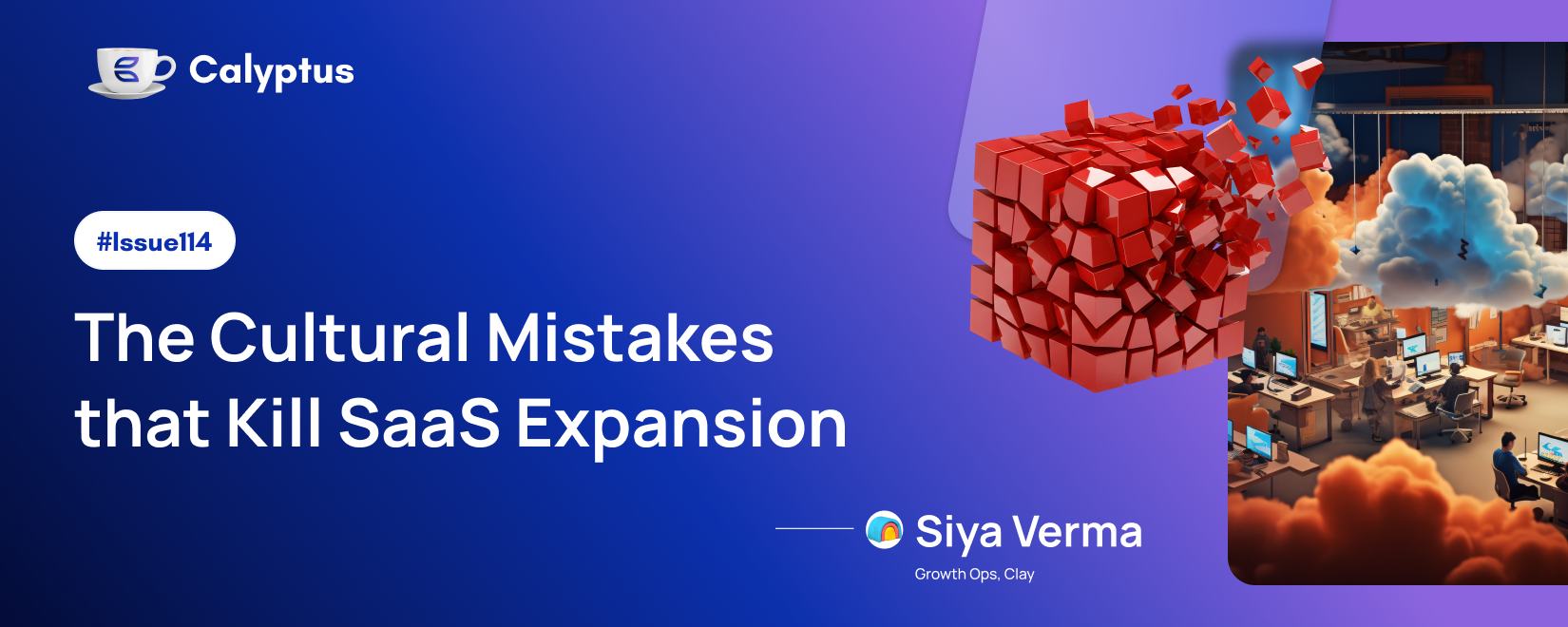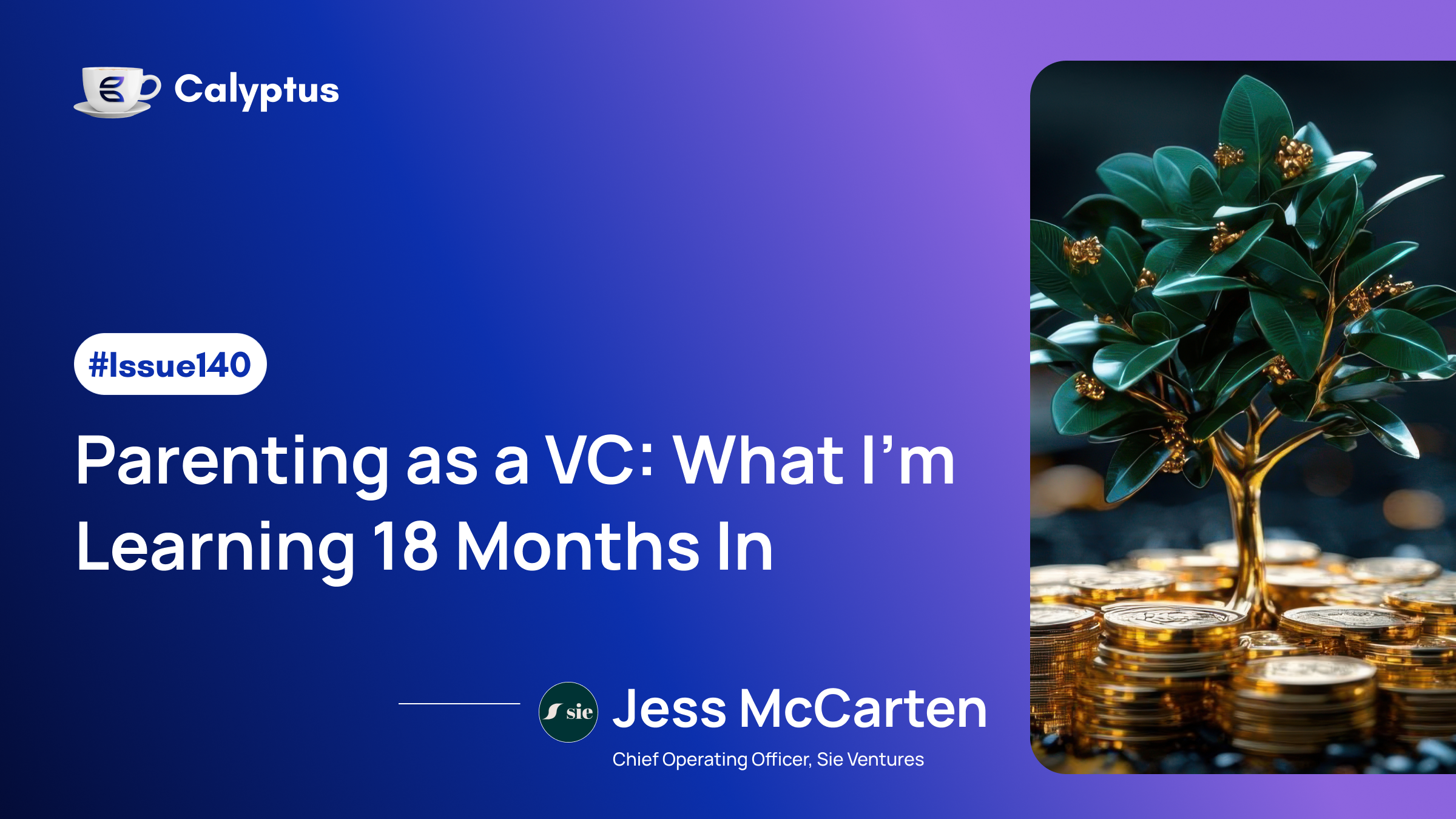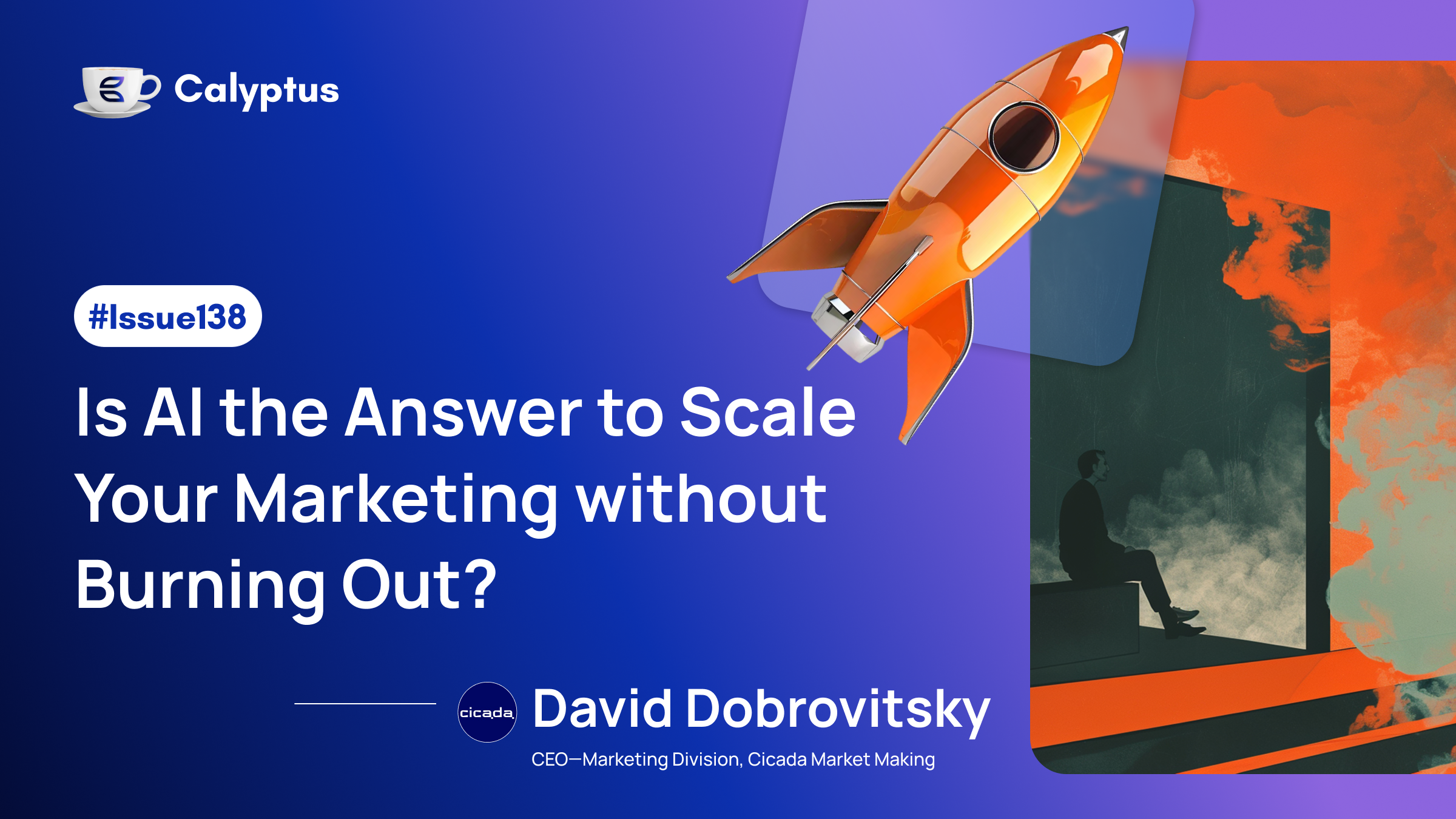This week on Coffee with Calyptus, meet Siya from Clay, building vibrant GTM communities for one of the hottest AI automation platforms in SaaS. Her journey spans talent sourcing at TikTok, running outbound agencies, and even managing tours for stand-up comedians. In this conversation, she shares how she has turned local chapters into thriving communities, and her personal AI toolkit for everything from research to real-time event management.

You went from talent sourcing for the likes of Tiktok to doubling down on growth & marketing for SaaS companies like Clay. What skill(s) have you most had to channel to excel in these incredible scale-ups?
I started as a content writer, back when freelancing wasn’t even seen as a career. I had no fancy strategy, I just knew I could write and make people feel something. A couple years in, I taught myself how to run discovery calls, write landing pages, do outbound, close deals. But eventually, it started feeling like I was just running a playbook. I wanted something that pushed me to think again.
That’s when I stumbled into the world of Talent Sourcing. I went deep fast, spent 2 good months obsessing over everything from Boolean search to scraping to crafting cold outreach that didn’t feel cold. It felt like sales without the sleaze, getting people to care, without shoving anything down their throat. That stuck with me. Whether it was sourcing engineers at scale or running GTM for SaaS tools like Clay, the skills I’ve learnt haven’t changed much. How to write in a way that sells without sounding like you’re selling. How to run calls that educate instead of bulldoze. How to build trust fast. Those are the muscles I keep flexing, no matter the role or title.
And honestly? What’s kept me going is that itch to learn things nobody taught me, and then apply them in ways no one expected.
Working in sourcing and recruitment helped me built core skills and I use most of those till date. After i left TikTok, I moved on to various roles across marketing, running an outbound agency, worked as a head of touring for stand up comedians. But the core job remained same - educate, create content, close.
Now at clay, i finally combine all of my skills - from sales, gtm ops work to organic engagement and running cool communities. It wasnt just one skill, rather the learning spirit, the contant urge to upskill and be updated with the trend. The role at clay is something i bagged after supporting the community in the hindsight for 1 year before i joined them full time this may.
Clay is leading in AI automation for GTM execution. What recent feature have you launched that users have become obsessed with?
Clay Operator is the recent feature users have become obsessed with. It's a premium version of Claygent that can access information previously unavailable to Clay users. Unlike regular Claygent, Clay Operator can navigate the web like a human - filling out forms, bypassing CAPTCHAs, logging into accounts, and accessing data behind authentication walls. Users can watch visual replays of the AI browsing the web, which helps with prompt refinement and auditing.
The feature transforms research capabilities by allowing users to access data that's hidden behind search forms or requires logins. For example, users can now research competitors on sites like Crunchbase that require authentication, or scrape data from specialized industry databases that don't offer bulk exports.
Clay Operator was released in beta in May 2025 and is now generally available, with users particularly excited about how it eliminates manual research tasks that previously couldn't be automated.
You’ve worked across India, Europe, and the US with a mix of SaaS startups and service brands. What’s been your biggest challenge scaling marketing across new geographies? How have you navigated it?
A big challenge I’ve faced when scaling marketing across new geographies is understanding and adapting to cultural differences. Even though digital channels make it easy to scale globally, cultural nuances really shape how your message is received, what resonates with people, and which channels are the most effective.
For example, a strategy that works in one region might not work in another due to differences in consumer behavior, communication styles, or even social and economic factors. A good example of this is influencer marketing. It might be incredibly effective in the US, but won’t yield the same results in markets like India or certain parts of Europe, where other strategies, such as community-based marketing or direct engagement through customer support, might perform better.
How I navigate this:
- Localized research and testing. Before diving into any new region, I spend time understanding the local audience, their behaviors, pain points, and what channels resonate best. My go-to sources are private slack communities, discord, reddit, linkedin, and any industry-specific communities. I also look closely at competitors and test different strategies early on, with A/B testing being key in this phase. It helps me get a feel for what’s going to work in that market. I also rely on the ExitFive community of b2b marketing folks. Everyone’s super helpful and you can get authentic advice if somebody has tried what you’re planning at the moment.
- It’s not enough to just translate content into the local language. I adjust the messaging, tone, and visuals to make sure they align with local values and preferences. This can mean tweaking everything from how the product is positioned to changing the imagery or even the call-to-action to better connect with the audience.
- Partnerships and collabs with local influencers and experts. One of the best ways to build credibility and trust in a new market is by working with local influencers or industry experts. They’re already trusted voices in the community, and their endorsement helps build credibility for your brand. It also gives me better insight into how the local market ticks.
The first 3-6 months are all about learning and adapting. I closely monitor key metrics and pay attention to customer feedback. If something’s not working, I don’t hesitate to pivot. Flexibility is key, especially when trying new channels that can take time to yield results, like SEO or ads. I also keep an eye on the budget, since these channels require patience to start seeing returns.
AI is becoming a key part of outbound and RevOps. How are you personally using AI in your day-to-day, and where do you think most GTM teams can improve?
AI has become a huge part of my day-to-day life, especially when it comes to outbound and RevOps. It’s completely changed the way I work, mainly because there’s so much data and so many resources out there.
For example, when I’m working with an early-stage portfolio company, a lot of my time goes into reading white papers, case studies, and other research materials. To make that process more efficient, I’ve trained different GPT versions and agents to help. Each agent is set up for specific tasks. For instance, for research, I’ve trained one to understand the context, find relevant info, and look for similar patterns. It saves me a ton of time and helps me focus on higher-level tasks.
At Clay, we use a tool called Dust, which has been a game changer for us. It’s a platform that lets you quickly create AI agents that connect to your company’s knowledge base and tools. With Dust, you can build custom agents that automate tasks, answer questions,etc. For example, when we need answers about Clay or our customers, we just type it into Slack, and Dust pulls up the info we need right away. It’s honestly one of the easiest ways to save time and stay on top of things.
These days I’m also trying Slack AI - especially the Recap feature. I was constantly missing out of key threads because I primarily work in IST hours while my whole team is in CET. The Recap feature has been a lifesaver, giving me a quick summary of what I missed during the hours I was offline or sleeping lol. Feels less overwhelming these days :)
When it comes to outbound, I’m not yet fully comfortable relying on AI to write messages. While it’s good at generating content, I don’t think it fully captures the personal touch needed for effective outreach. That said, I’ve used AI in a more data-driven way. For example, when I worked with a conversion rate optimization agency, we used AI to predict conversion rates and estimate how we could improve them. With a bit of input, we were able to use AI to project potential revenue, and it was surprisingly accurate when we launched the campaign.
AI is also super helpful in RevOps. It’s not just about automating simple tasks like notifications, it’s also great for larger projects. For example, during the Clay World Cup Round 2, we had 16 teams competing, and my team was responsible for giving feedback in real time. We integrated AI along with tools like Lovable, Supabase, and Clay to set up a scoring system, which automatically tracked progress and updated the leaderboard every five minutes during a 20-minute window. This would’ve been a nightmare to manage manually a few months ago, but now AI handles it seamlessly.
Looking at GTM teams in general, I think there’s a lot of untapped potential in how we use AI for decision-making. A lot of teams use AI for automation, but I think it could go further, especially in areas like personalization and predictive analytics. AI can really help with things like lead scoring, predicting buyer behavior, and fine-tuning messaging. Plus, AI can continuously analyze campaigns, predict what’s working, and adjust in real-time, which makes everything a lot smarter and more responsive.
Once teams start embracing in creative ways, they’ll be able to see the value beyond some basic prompting and automations.
We hope you enjoyed this edition of Coffee with Calyptus. Stay curious, stay inspired, and keep building what matters. Explore more editions and insightful articles at




